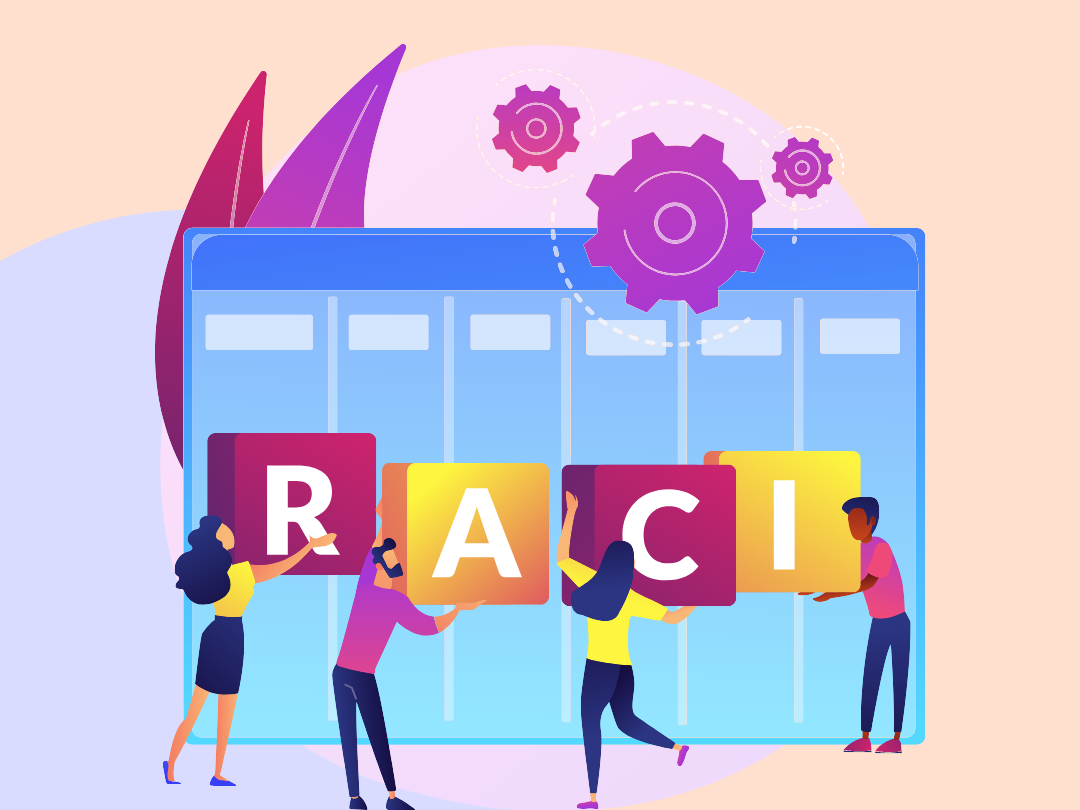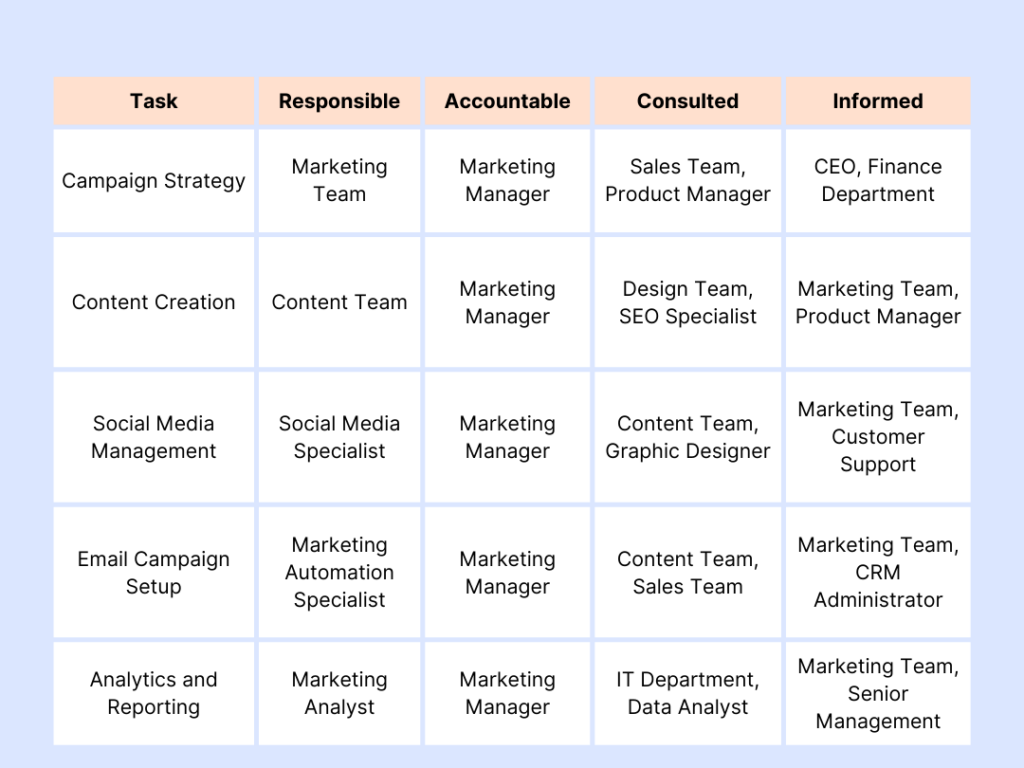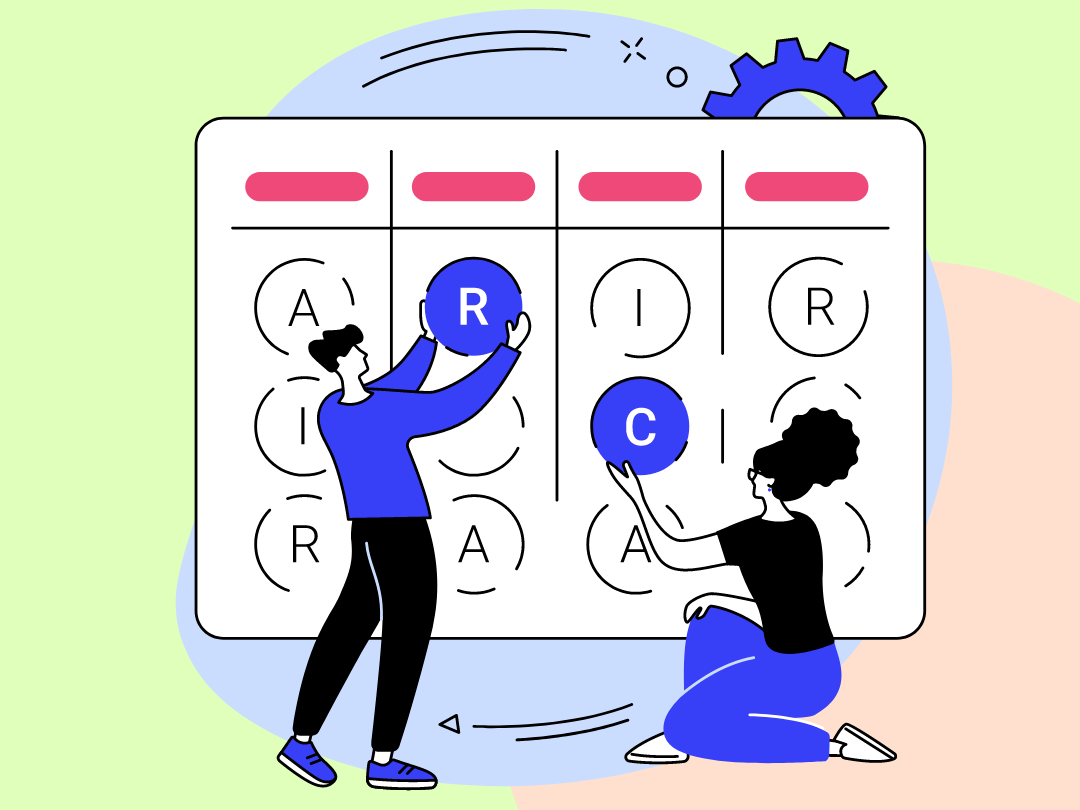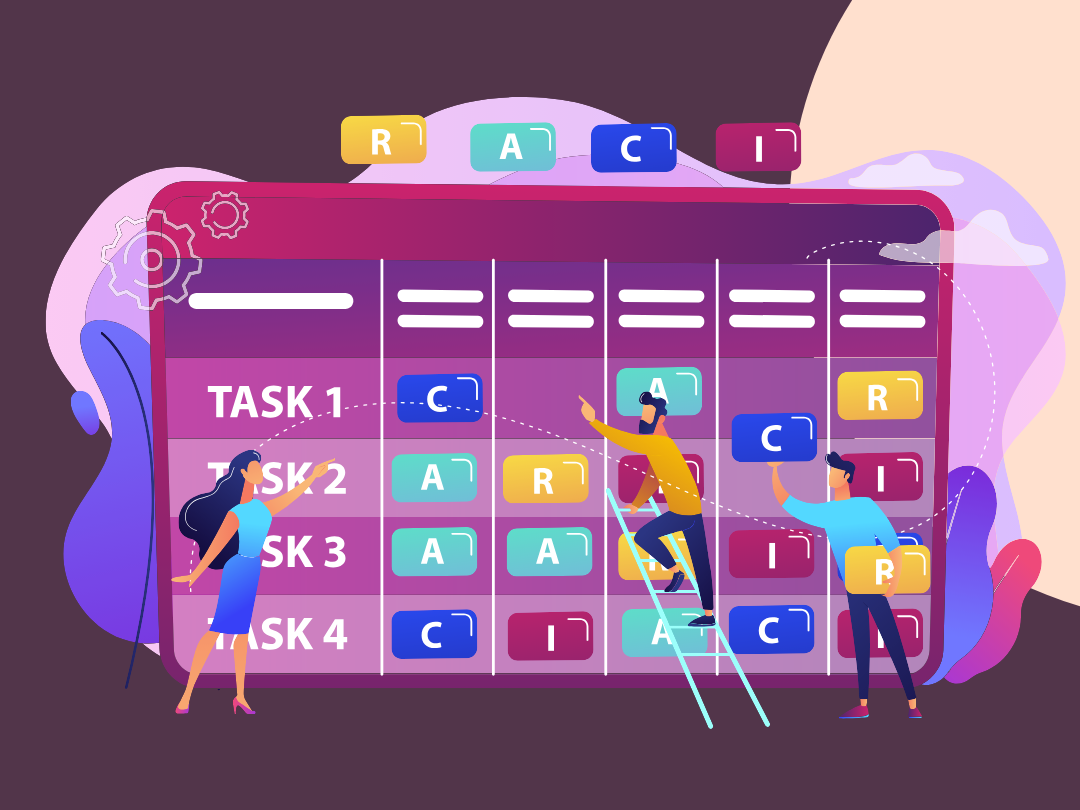Leveraging the RACI Matrix for Strategic Execution of Projects
Mapping the Path to Success!
Share:

Get to know about:
In modern world success often hinges on effective communication, clear roles, and responsibilities. One powerful tool that helps achieve this is the RACI matrix. It’s not just a fancy acronym; it’s a structured approach that can streamline workflows, mitigate confusion, and ultimately lead to project success. Let’s delve deeper into what the RACI matrix is, why it’s important, and how it can be effectively utilized.
What is a RACI Matrix?
RACI stands for Responsible, Accountable, Consulted, and Informed. A RACI matrix is a grid that helps define and clarify the roles and responsibilities for each task or activity within a project. Each letter in RACI represents a different level of involvement:
Responsible (R): The person or people who are responsible for completing the task or activity. They are the “doers” who are directly involved in executing the work.
Accountable (A): The individual who is ultimately answerable for the completion and success of the task. This person approves the work done by the Responsible party and ensures that it meets the required standards.
Consulted (C): Individuals or stakeholders who need to provide input or expertise before the task can be completed. They are typically subject matter experts or stakeholders whose input is valuable for the task.
Informed (I): Individuals or groups who need to be kept informed about the progress of the task but are not directly involved in its completion. They may need to be aware of decisions, changes, or outcomes related to the task.
Importance of RACI Matrix
Clarity and Accountability: One of the primary benefits of the RACI matrix is that it provides clarity regarding who is responsible for what. This reduces ambiguity and ensures that everyone knows their role, thus enhancing accountability.
Efficient Communication: By clearly defining who needs to be consulted and informed for each task, the RACI matrix facilitates efficient communication. Team members know exactly whom to reach out to when they need input or updates on a particular task.
Risk Mitigation: Clearly defining roles and responsibilities helps identify potential gaps or overlaps in the project workflow. This allows project managers to address these issues proactively, reducing the risk of misunderstandings or missed deliverables.
Empowerment and Engagement: When team members understand their roles and how they contribute to the project’s success, they feel empowered and engaged. The RACI matrix fosters a sense of ownership and accountability among team members, driving motivation and productivity.
How to Implement the RACI Matrix Effectively?
While the RACI matrix can be a powerful tool, its effectiveness depends on how it’s implemented. Here are some tips for using the RACI matrix effectively:
Involve Stakeholders: When creating the RACI matrix, involve key stakeholders to ensure that all perspectives are considered. This promotes buy-in and ensures that the matrix accurately reflects the project’s requirements.
Keep it Simple: Avoid overcomplicating the RACI matrix with too many roles or unnecessary levels of detail. Keep it simple and focused on the key responsibilities for each task.
Regular Updates: The RACI matrix should be a dynamic document that evolves as the project progresses. Regularly review and update the matrix to reflect changes in roles, responsibilities, or project requirements.
Training and Communication: Ensure that all team members understand how to use the RACI matrix and what each role entails. Provide training if necessary and communicate the purpose and benefits of the matrix to the entire team.
Flexibility: While the RACI matrix provides a framework for assigning roles and responsibilities, it’s important to remain flexible. Projects are dynamic, and roles may need to be adjusted based on changing circumstances or priorities.
RACI Example
Here’s an example of a simplified RACI Matrix for a marketing campaign:

In this example:
Responsible (R): Specifies who is responsible for executing each task. For instance, the Content Team is responsible for Content Creation.
Accountable (A): Indicates the person ultimately answerable for the completion and success of the task. In this case, the Marketing Manager is accountable for Campaign Strategy, ensuring it aligns with overall objectives.
Consulted (C): Lists individuals or teams that need to provide input or expertise before the task can be completed. For instance, the Sales Team and Product Manager are consulted for Campaign Strategy.
Informed (I): Specifies individuals or groups who need to be kept informed about the progress of the task. For example, the Marketing Team and Customer Support are informed about Social Media Management updates.
Conclusion
In conclusion, the RACI Matrix serves as the cornerstone of collaborative leadership by providing a structured framework for defining roles and responsibilities within a project or organization. By fostering clarity, alignment, empowerment, and accountability, the RACI Matrix enables teams to work together effectively towards common goals, driving project success and organizational excellence. As collaborative leadership continues to gain importance in today’s business landscape, the RACI Matrix remains a valuable tool for leaders seeking to maximize the potential of their teams and achieve meaningful outcomes.
Incorporating the principles of the RACI Matrix into your leadership approach can enhance collaboration, streamline decision-making, and drive success in your projects and initiatives.

Streamline your Projects Easily.
No-Code development platform for all your unique projects.






